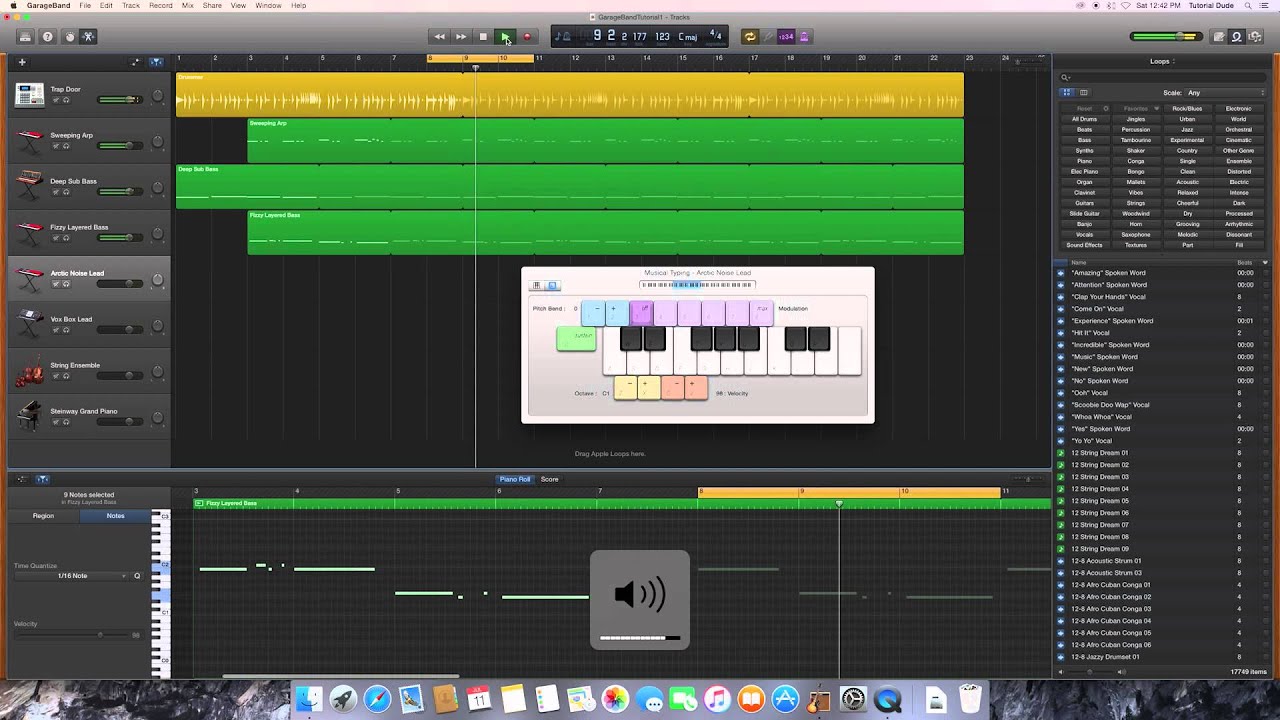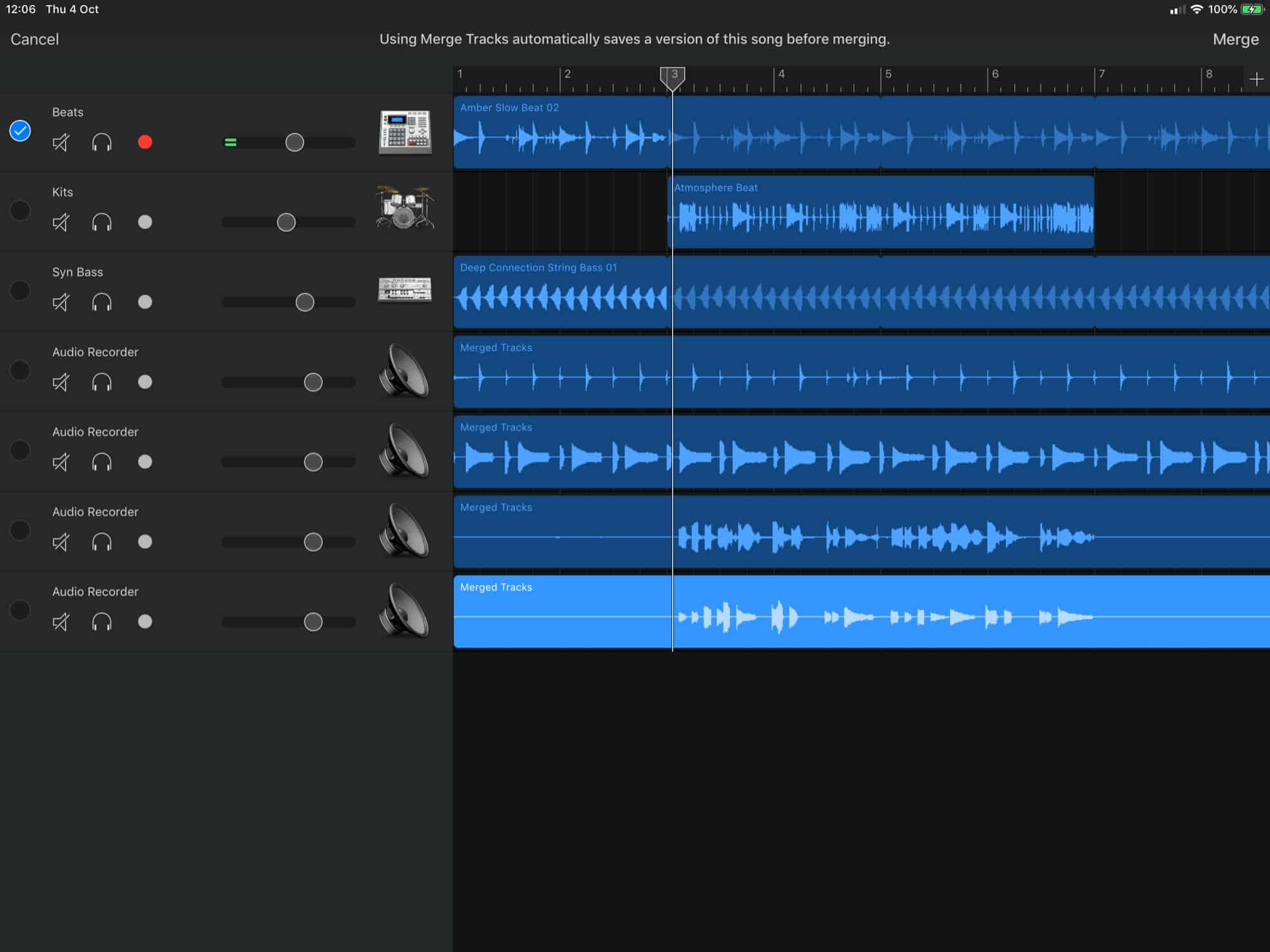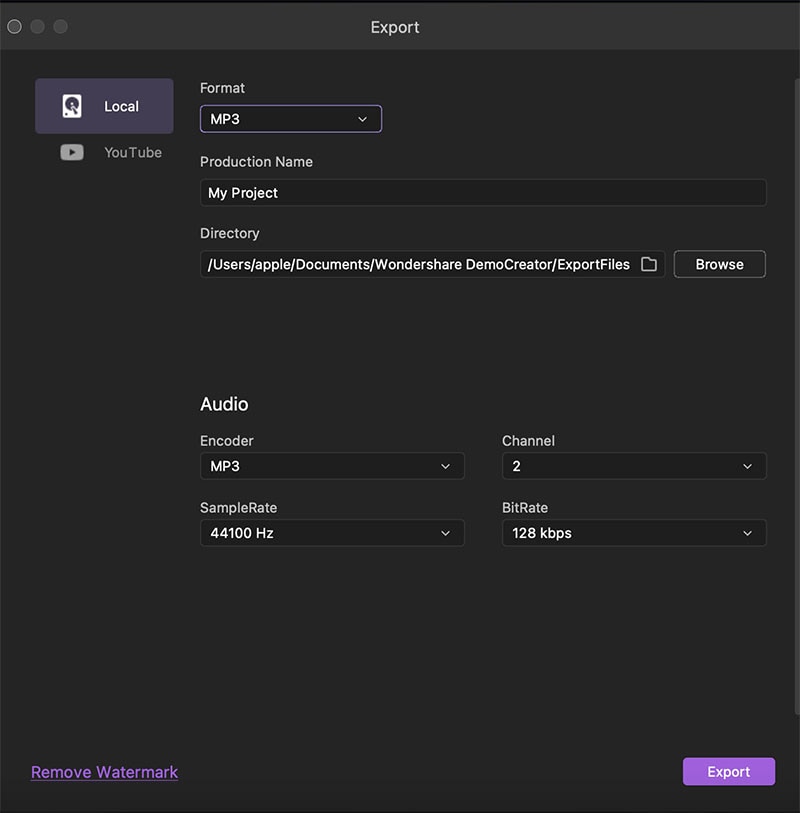

- Garageband for mac export audio formats how to#
- Garageband for mac export audio formats pro#
- Garageband for mac export audio formats software#
- Garageband for mac export audio formats free#
Playback some “silent” regions (with headphones at maximum volume) to detect any unwanted background noise. Move your cursor to the start of the wavform, and hit play to playback your recording and monitor the levels in the Playback Meter. A fuzzy baseline means there is interference or ambient noise in the background. Periods of silence should display as a thin horizontal line at 0.0. The waveform should be centred on 0.0, and never reach maximum amplitude (1.0 or -1.0 on the graph). After 10-20 seconds, hit stop and inspect the tracing. You should hear your voice through the headphones, and see the waveform trace out on the timeline.
Garageband for mac export audio formats software#
(If Audacity was running before you connected the USB microphone, you may need to close and restart to avoid an error message).įor this work I used version 2.3.3 of Audacity(R) recording and editing software 1 For detailed instructions go to Help > Quick Help in the Audacity menu. (The instructions below are for audacity-win-2.3.3). Install on C:\Program Files (x86)\Audacity. Check the boxes under Exclusive Mode, so you can control the levels within Audacity, and hit Apply. Under Default Format, select the highest quality.

Plug your microphone into the USB port, or the microphone jack.Check the boxes under Exclusive Mode, so you can control the volume within Audacity, and hit Apply If you hear a tone in the left side and then the right side of your headphones, your speakers are working correctly. Click on Additional device properties link to get the Advanced tab, then hit Test button.Under Device Properties tab ensure that Speakers/Headphones are enabled, and under Balance,move sliders up to middle of range.

Go to Settings > System> Sound. Under Choose your output device, select Speakers/Headphones. Plug your headphones into the audio jack.Some students may require an accessible alternative, such as a transcript, to an audio-only presentation.Instructional Technologies and Media Services (ITMS) provides best practices for video and audio recording.To record audio on your home computer, you will need headphones and a microphone.
Garageband for mac export audio formats how to#
Garageband for mac export audio formats free#
Once you have made your changes, click ‘Export’ to create a custom audio file ready for uploading.Need help with something you've read on this page or seen in one of our instructional videos? Waterloo instructors can connect with CEL's Agile Development Team to schedule a live consult with a multimedia developer.Īudacity (from ) and GarageBand (from Apple) are recommended free choices for recording audio for things such as podcasts. This will allow you to tweak each parameter as required. The other option is to select ‘Custom’ as your platform and click on the drop-down tab for ‘Advanced Settings’. If you want to see what settings are used for each platform, click on the drop-down tab for ‘Advanced Settings’. This will automatically optimise the podcast for that particular platform. The first and easiest option is to select the distribution or streaming platform you will be uploading your podcast to, and then click ‘Export’. You can also optimise your podcast for different distribution and streaming platforms. You will see a pop-up box with options for editing the name of your podcast and its assigned colour. From here, you can access the various exporting options.įirst, click on the podcast that you want to export. ‘Podcast Transfer Mode’ allows the podcasts stored on the microSD card to be read by a computer.
Garageband for mac export audio formats pro#
Exporting Podcasts from the RØDECaster Pro to a Computerįirst, connect your RØDECaster Pro to a computer via USB and open the Companion App, then set it to ‘Podcast Transfer Mode’ either by navigating to the microSD card settings (tap the card icon from the main screen) or by clicking on the ‘Podcasts’ tab in the Companion App and clicking the ‘Podcast Transfer Mode’ slider.


 0 kommentar(er)
0 kommentar(er)
